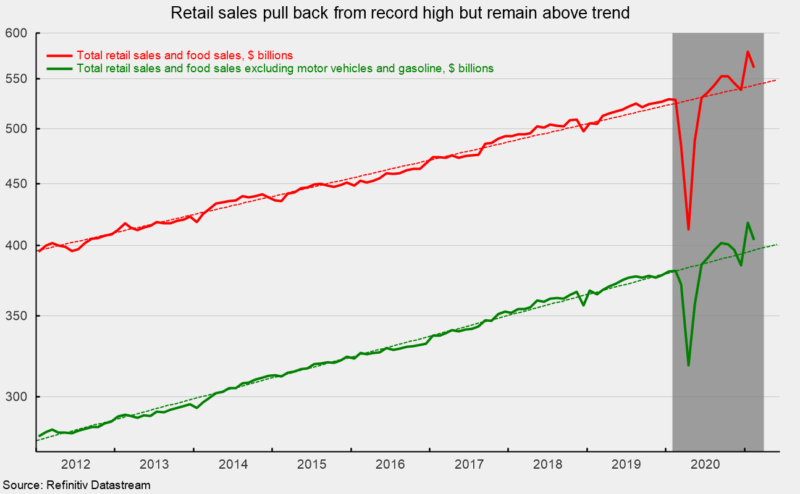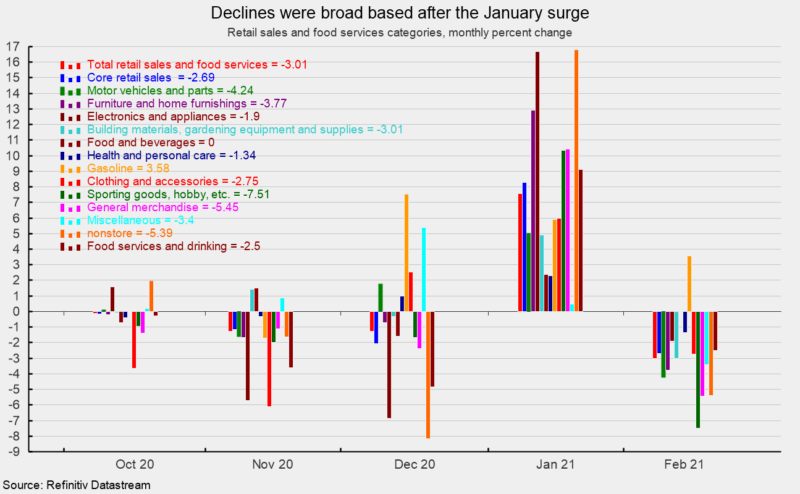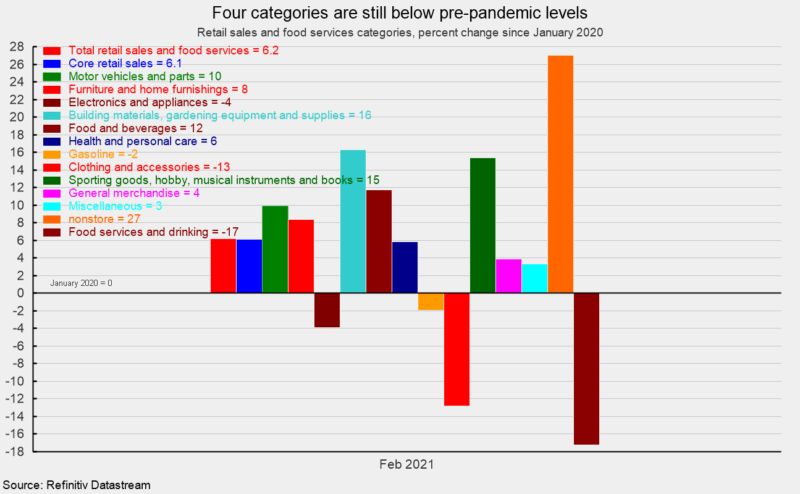Retail Sales Fell in February But Remain Above Trend
Retail sales and food-services spending fell 3.0 percent in February pulling back from a record high in January. Despite the decline, total retail sales and food services spending remains above the most recent nine-year trend (see first chart). From a year ago, this measure is up 6.3 percent. Averaging the first two months, total retail sales are up 7.9 percent versus the first two months of 2020, the fastest pace since 2011.
Core retail sales, which exclude motor vehicle dealers and gasoline retailers, posted a 3.3 percent drop for the month following a record high in January. Core retail sales are also still above trend (see first chart) and are up 6.0 percent from a year ago. Averaging the first two months, core retail sales are also up 7.9 percent from the same period a year ago; that is the fastest pace on record for that measure back to 1992.
Comparing the first two months to the fourth quarter, total retail sales and food services spending is up 19.8 percent at an annualized rate while core retail sales are up at an 18.0 percent pace. Those results suggest a very strong reading for first quarter gross domestic product.
The declines in February were broad-based across the categories shown in the report. All but one of the thirteen major categories reported a drop in February sales (see second chart). The lone gainer was gasoline sales, posting a 3.6 percent rise for the month, though that was likely driven by a 7.0 percent rise in the retail price of gasoline (these monthly retail sales numbers are not adjusted for price changes). Leading the decliners were sporting goods, hobby, etc., falling 7.5 percent followed by nonstore retailers and general merchandise stores, both down 5.4 percent for the month (see second chart).
The weak February result did not help with the overall recovery among the individual categories, as four of the 13 categories still had sales below their pre-lockdown levels. Restaurants were 17 percent below January 2020 followed by clothing and accessory stores (13 percent below), electronics and appliances (3.9 percent below) and gasoline stations (2 percent below; see third chart).
Overall, retail sales posted a decline in February following a surge to a record high in January. Despite the decline, the first two months average to a very strong start to the year and suggest that growth in first quarter gross domestic product is likely to be quite strong. Combined with the ongoing distribution of vaccines and easing of government restrictions on consumers and businesses, the outlook for the economy is improving significantly. The positive momentum needs to be sustained and spread to other areas such as the labor market, but recent data have been clearly favorable.








